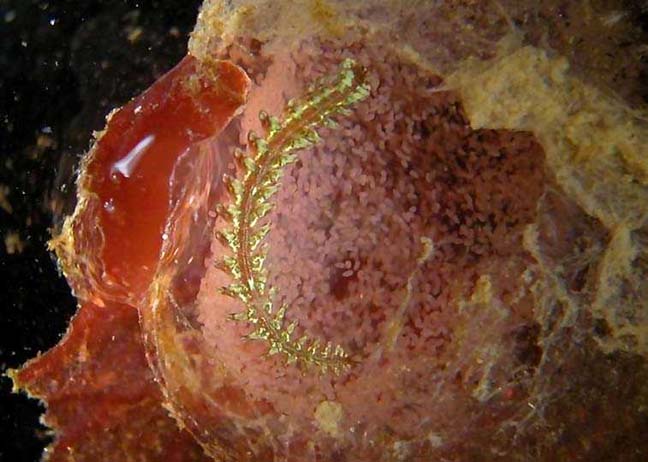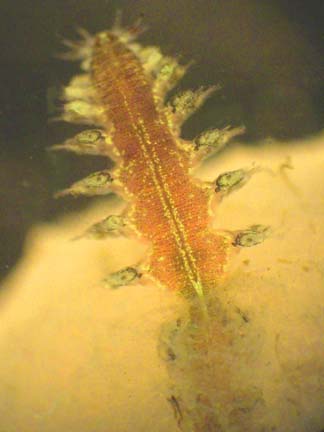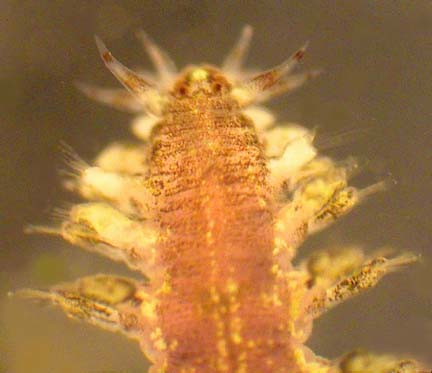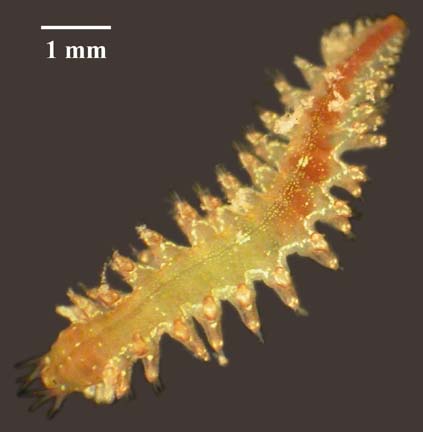
Micronereis nanaimoensis Berkeley and Berkeley, 1953
This very small nereid worm was first described from British Columbia and appears to be native to the Pacific Coast. We collected females of this polychaete worm from floating marina docks in San Francisco Bay during March of 2002 and 2003. Its spawning season appears to occur in spring locally and has been reported to be between March and May in the Vancouver area (Berkeley and Berkeley, 1953). During spawning, mature male and female M. nanaimoensis swarm together without any obvious physical modification of their bodies, as is seen in Neanthes and Nereis. Eggs are laid by the female, externally fertilized by a male, then rolled together by the female and surrounded with a clear jelly-like mucous ball, inside of which she will remain with them until they hatch into free swimming larvae (from about 13 to 16 days). After this time, the larvae are thought to move to the benthos (the bottom of the bay) to mature into adult worms. In the first image below, the small three-segment larvae can be seen inside a jelly mass. Females of this species exhibit a sort of maternal care that is thought to be very rare in polychaetes.
This species is sexually dimorphic (males and females have obvious differences in appearance). Males tend to be slightly smaller than females (at about 13mm) and show brilliant patterns of orange, scarlet and turquoise in life. They also possess specialized hooked setae that may be used to stimulate ovulation. Females' bodies (at about 15mm) exhibit dark red/brown lines on a cream-colored background. Both sexes have red and white or cream banding on their tentacular cirri. The females that we collected from the Bay exhibited golden luminescent areas along the lengths of their bodies.



